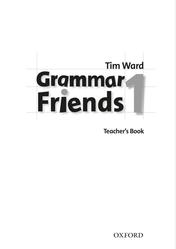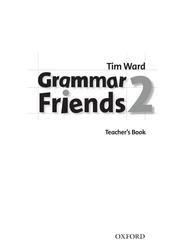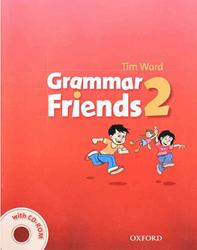Analyzing english grammar, Klammer T., Schulz M., Volpe A., 2013.
One of the chief goals of chapter one is to explore with students the various meanings of grammar and grammatical rule. Many students begin the class with the notion that grammatical rules are solely concerned with matters of correctness and incorrectness and that these prescriptive rules must be memorized. One way of pointing out to students the limits of memorization is to contrast the rules of English described by formal linguists, those known to applied linguists, those known to the best teachers, and those taught to students. Using an overhead projector, we like to talk about the following diagram adapted from Steven Krashen, Principles and Practice in Second Language Acquisition (Oxford: Pergamon Press, 1982), pp. 92-93.

BEGINNING THE DISCUSSION.
It may help students to understand questions of “correctness” by pointing out that standard and nonstandard English exist as opposite ends of a continuum, along which any speaker is placed. Speakers who have no strongly stigmatized items in their speech (He don’t) and only a few instances of mildly stigmatized items (goin’) are heard as speaking standard English. At one end of the continuum is language universally recognized as standard, and at the other, as nonstandard. In between, the same varieties of speech will be rated by some as standard and by others as nonstandard, depending upon how many items perceived as nonstandard are present. Probably no one speaks a version of English which matches the written standard at all times. The differences in judgment come about because of differing evaluations of what constitutes the standard, as the following exercise illustrates.
CONTENTS.
Preface.
MyCompLab.
Teaching Suggestions.
Chapter 1.Introduction.
Chapter 2.Varieties of English.
Chapter 3.The Morphology of English.
Chapter 4.Form-Class Words.
Chapter 5.Structure-Class Words Part I.
Chapter 6.Structure-Class Words Part II.
Chapter 7.Phrases.
Chapter 8.Five Basic Sentence Types.
Chapter 9.Basic Sentence Transformations.
Chapter 10.Finite Verb Clauses Part I: Adverbial and Adjectival Clauses.
Chapter 11.Finite Verb Clauses Part II: Nominal Clauses.
Chapter 12.Nonfinite Verb Phrases.
Appendix.
The Sounds of English.
Answers to the Exercises.
Купить .
Теги: Klammer :: Schulz :: Volpe :: книги по английскому языку :: английский язык :: грамматика :: книги на английском языке
Смотрите также учебники, книги и учебные материалы:
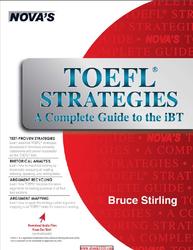 TOEFL Strategies, A Complete Guide to the iBT, Stirling B., 2016 — TOEFL is one of the most popular English language tests in the world. TOEFL itself means test of English as … Книги по английскому языку
TOEFL Strategies, A Complete Guide to the iBT, Stirling B., 2016 — TOEFL is one of the most popular English language tests in the world. TOEFL itself means test of English as … Книги по английскому языку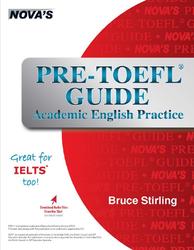 Pre TOEFL Guide, Academic English Practice, Stirling B., 2017 — Do you plan to take TOEFL or IELTS but are not ready for the challenge? Do you need more practice? … Книги по английскому языку
Pre TOEFL Guide, Academic English Practice, Stirling B., 2017 — Do you plan to take TOEFL or IELTS but are not ready for the challenge? Do you need more practice? … Книги по английскому языку Complete Advanced, Progress Tests, Brook-Hart G., Haines S., 2014 — Фрагмент из книги. I’d like to look more like Indiana Jones. Who wouldn’t? Looking into the mirror, I see a … Книги по английскому языку
Complete Advanced, Progress Tests, Brook-Hart G., Haines S., 2014 — Фрагмент из книги. I’d like to look more like Indiana Jones. Who wouldn’t? Looking into the mirror, I see a … Книги по английскому языку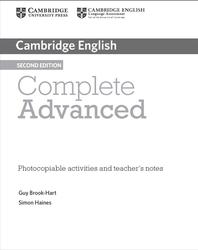 Complete Advanced, Photocopiable activities and teacher’s notes, Brook-Hart G., Haines S., 2014 — Фрагмент из книги. The reception area of the multimedia music company where you work has been described by visitors and … Книги по английскому языку
Complete Advanced, Photocopiable activities and teacher’s notes, Brook-Hart G., Haines S., 2014 — Фрагмент из книги. The reception area of the multimedia music company where you work has been described by visitors and … Книги по английскому языку
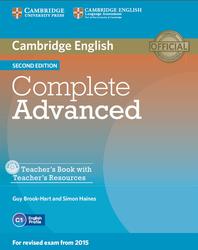 Complete Advanced, Teacher’s Book, Brook-Hart G., Haines S., 2014 — Complete Advanced, Teacher s Book, Brook-Hart G., Haines S., 2014. Complete Advanced Second Edition is a stimulating and thorough preparation … Книги по английскому языку
Complete Advanced, Teacher’s Book, Brook-Hart G., Haines S., 2014 — Complete Advanced, Teacher s Book, Brook-Hart G., Haines S., 2014. Complete Advanced Second Edition is a stimulating and thorough preparation … Книги по английскому языку Gold Preliminary, Teacher’s Book, Warwick L., Walsh C., 2013 — Gold Preliminary, Teacher s Book, Warwick L., Walsh C., 2013. Welcome to Gold Preliminary, an innovative and engaging course for … Книги по английскому языку
Gold Preliminary, Teacher’s Book, Warwick L., Walsh C., 2013 — Gold Preliminary, Teacher s Book, Warwick L., Walsh C., 2013. Welcome to Gold Preliminary, an innovative and engaging course for … Книги по английскому языку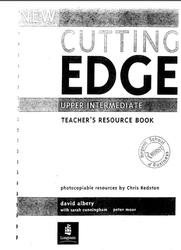 New Cutting Edge, Upper Intermediate, Teacher’s Resource Book, Albery D., 2005 — New Cutting Edge, Upper Intermediate, Teacher s Resource Book, Albery D., 2005. New Cutting Edge Upper Intermediate Is aimed at … Книги по английскому языку
New Cutting Edge, Upper Intermediate, Teacher’s Resource Book, Albery D., 2005 — New Cutting Edge, Upper Intermediate, Teacher s Resource Book, Albery D., 2005. New Cutting Edge Upper Intermediate Is aimed at … Книги по английскому языку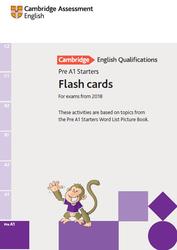 Pre A1 Starters, Flash Cards for Exams from 2018, 2017 — Фрагмент из книги. My body. face eye mouth nose head. Книги по английскому языку
Pre A1 Starters, Flash Cards for Exams from 2018, 2017 — Фрагмент из книги. My body. face eye mouth nose head. Книги по английскому языку

